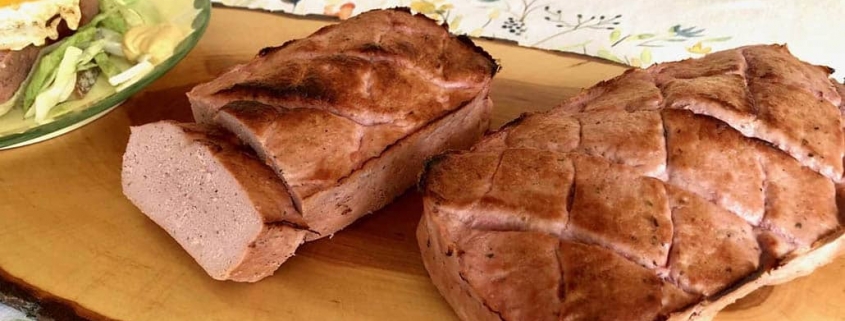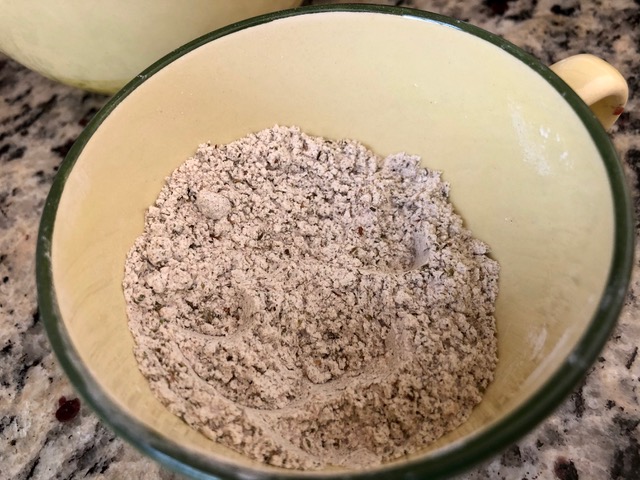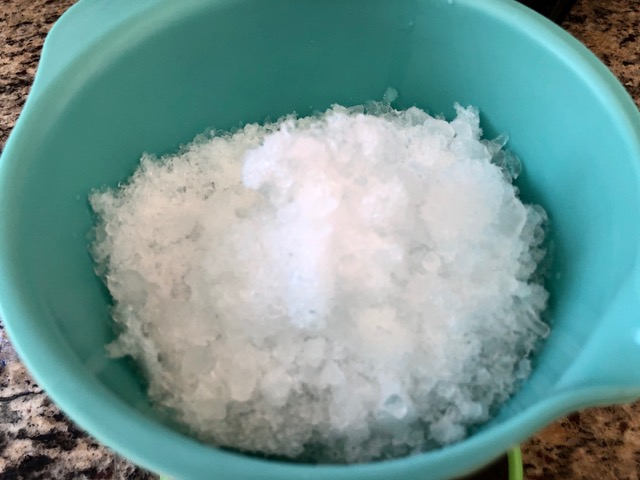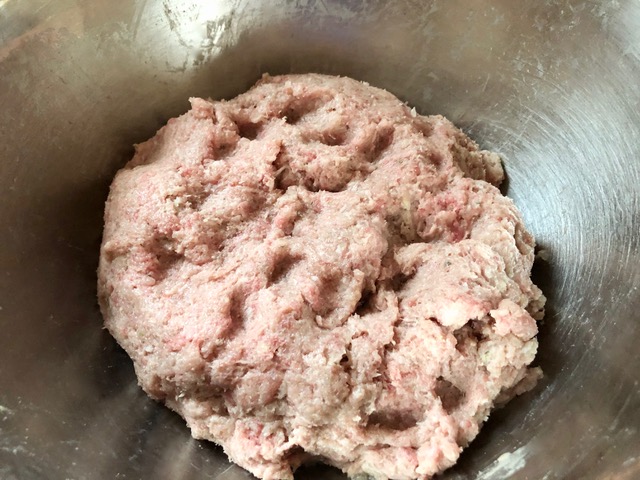Homemade German Leberkäse
Homemade German Leberkäse – Fleischkäse
The Homemade German Leberkäse translates to liver-cheese, which might be confusing; because the original version of the Leberkäse had no connection to liver or cheese and did not necessarily contain liver or cheese. The word liver translated to Laib, a loaf, and cheese reminds of the shape as a “loaf of cheese.” The original spices are curing salt, white pepper, mace, coriander, and ginger.
General tips to notice before preparation of the meat:
It is important to keep the ingredients of the Fleischkäse at all times cold to succeed in making the Fleischkäse. Have the meat grinder and baking pan in the refrigerator to cool it so that the ground meat will not get too warm. The meat should be very cold and at no time getting too warm during the process of making the Leberkäse.
Kitchen Gadgets:
- Kitchen scale
- Metal bowls
- Meat grinder, grinder plate fine
- Food processor for 14 cups or more, knife blade
- Blender, for crushing the ice
- Loaf Pan 9.5 inches x 5.5 inches
- Food thermometer
Ingredients for the Homemade German Leberkäse:
- 550 g (1.21 lbs) of pork meat, lean OR ground pork
- 450 g (15.87 oz) of beef meat, lean OR ground beef
- 200 g (7.05 oz) of pork belly fat without rind OR unsliced bacon without rind
- 400 g – 500 g (14.1 oz – 1.1 lbs) of crushed ice or ice water (should have the quality of drinking water)
- 2 tablespoons of corn starch
- 1 onion (300 g – 10.58 oz), diced
- 2 – 4 large cloves of garlic, diced
- 1-2 teaspoons of salt, 1 teaspoon if you use bacon
- 1-2 teaspoons of white pepper, ground
- 2 teaspoons of marjoram, leaves
- 1 teaspoon of pink curing salt (you can find it in hardware stores selling hunting and fishing supplies)
- ½ teaspoon of nutmeg, ground
- ½ teaspoon ginger, ground
Preparation of the Fleischkäse:
Make sure that the meat has a temperature of 5°C – 41°F or less during the processing. Therefore place it after each step for cooling into the freezer.
Cut the meat and belly fat into cubes, place it in a metal bowl, mix with your hands, and cool it for 30 minutes in the freezer before grinding it with the meat grinder using the plate with the smallest holes.
Peel and dice the onions and garlic and grind them with the meat and pork belly into a bowl. Add the mixture of starch, spices, and curing salt to the ground meat mixture and knead with your hands. Divide the meat, making it easier to mix it in the food processor later, and place it for 30 minutes in the freezer.
Finishing the Leberkäse:
Crush half of the ice in a blender until it is ice snow. The amount of ice creates the texture of the meatloaf. I used 400 g – 14.1 oz). Mix half of the meat and beat it with the half of the crushed ice alternately in the food processor for 3 – 5 minutes or until smooth. You also can use a stand mixer, but the meat will not be as fine. Oil a baking pan and fill it with the meat mixture making sure to avoid air pockets. Dip a spatula into the water and smooth the top of the meatloaf with it. Make the criss-cross pattern into the surface, using the spatula and not a knife. Dip the spatula into the water if necessary to make clean lines.
Continue with the second half of the meat in the same way. If you want to use only one baking pan (9.5 inches x 5.5 inches), take the first portion out of the freezer and mix both halves together using your hands. I used two small baking pans. Keep the Leberkäse for 15 minutes in the freezer before baking. Check the temperature of the finished Leberkäse. It must stay below 12°C – 53°F after processing.
Baking of the Homemade German Fleischkäse:
Preheat the oven to 180°C Grad – 360°F. Place the Leberkäse on the third (middle) rack and bake for 40-60 minutes or until the meat center has reached 70°C Grad – 160°F. The baking time is depending on the size of the baking pans used. To brown the crust more, higher the temperature to 205°C – 400° F and place the loaf onto the oven’s 5th rack. Bake for 10-15 more minutes or until you have reached the color of the crust you like. Turn the oven off, open the door and leave the loaf for 10 more minutes in the oven.
To make the German meatloaf “Falscher Hase,” click the link here. To make Beef Rouladen click here and for the Cabbage Rolls, click here.









